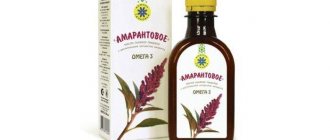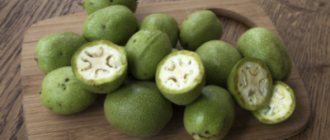Almonds are considered a classic product for diabetics. It has a low glycemic index, however, the amount of useful nutrients in the nut is colossal. It is a storehouse of vitamins, essential fatty acids and protein, similar in composition to that of animals. The editors of the Agronom.guru portal today decided to study almonds in more detail, their benefits and harms for the human body, and also find out what beneficial substances are hidden in this tasty seed.
Externally, these nuts resemble the kernel of an apricot kernel.
What are almonds and how do they grow?
Almonds are a stone fruit about the size of a peach pit. Formally, it is classified as a nut, although the tree or rather tall shrub on which it grows belongs to the Plum genus.
There are three main types:
- Sweet . It is characterized by a weak spicy taste and low amygdalin content.
- Bitter . It is characterized by a high content of amygdalin. It can easily decompose into several components, one of which is hydrogen cyanide. The latter substance is poisonous, and therefore it is not recommended to eat this type of nut without heat treatment. It is better not to give it to children at all, since the lethal dose is only 10 nuts. For adults, this dose is equal to 50 nuts. During heat treatment (frying, roasting or boiling), toxic substances are destroyed and the nuts become safe for consumption.
- Fragile . It is characterized by a fragile, thin shell, with sweet seeds.
Almonds in shell
The largest nut fields of the almond tree are located in the Mediterranean, America and China. It also grows in warm regions of Slovakia, South Moravia, Crimea and the Black Sea coast of Russia. The plant loves rocky and gravelly soils. Almonds are sun-loving and frost-resistant, but may suffer from spring frosts. It has a well-developed root system. It begins to bear fruit from 3-4 to 30-50 years, and the total life expectancy can reach 130 years.
This is what almonds look like growing on a tree
Almonds in all variations: in skin, without skin, in hard shell and without thin skin
Almonds: chemical composition and nutritional value
Its seeds consist of 30-60% non-drying vegetable oil. In addition, the composition includes:
- essential fatty acids;
- a large amount of protein, similar in its properties and composition to muscle protein;
- vitamin E;
- RR;
- A;
- WITH;
- group of vitamins B;
- calcium;
- potassium;
- phosphorus;
- magnesium;
- iron.
Almonds are also quite high in calories. Per 100 g of product it contains 579 kcal.
This is how beautiful the almond blossoms are.
Almonds: their beneficial properties and contraindications
Let's look at the benefits of almonds for the body.
Walnut: benefits and harm for the body of men, women and children. In a special publication on our portal we will talk in detail about walnuts. You will learn the chemical composition, nutritional value and calorie content of walnuts, benefits and harms for the human body and how to use walnuts in various forms in folk medicine.
Almonds: benefits and harm for women
For women, nuts will help cope with the problems of hormonal surges, especially during menopause. Helps normalize the menstrual cycle. To reduce pain directly during menstruation, it is recommended to eat several nuts a day. Vitamin E is an excellent non-enzymatic antioxidant. It helps the body's cells cope with premature aging and will make you look fresh and young.
Almonds also make very tasty kozinaki.
During pregnancy and breastfeeding, it is also recommended to include almonds in the diet. This nut is an excellent source of protein and essential fats. They help restore the body's strength, relieve fatigue and help avoid exhaustion. The high content of calcium and fluoride will be beneficial for both mother and baby. Calcium is especially important during pregnancy, so do not neglect its use. The nut also contains folic acid, which is essential during gestation for its proper development.
The beneficial properties of almonds are also used in cosmetology. Due to its antioxidant properties, its components are added to creams, scrubs, shampoos, cleansers, masks and much more. It helps maintain healthy hair and skin. Fatty acids prevent the formation of dryness and cracks on the skin, improve its elasticity and keep it smooth longer. With regular consumption of almonds, hair becomes smooth, shiny and healthy in appearance. We will consider its application in cosmetology in more detail below.
In appearance, dried almonds are not much different from raw ones.
The benefits and harms of almonds for men
For men, these fruits will be useful in that they help improve the functioning of the genitourinary system. After all, after 30 years, the male body begins to produce less testosterone, and almonds help the body produce male hormones. Nuts also contain selenium and zinc, which increase libido. The amino acid arginine helps increase libido. All this together helps to maintain harmony in the intimate sphere longer, prevent the extinction of sexual desire and, as a result, reduce the risk of prostatitis.
This is what bitter almonds look like
Are almonds good for children?
It is recommended to include nuts in children's diets during high mental stress. Vitamin E has a positive effect on vision. It is best to start “introducing” it to a child over 3 years old. Gradually giving him 1-2 crushed nuts to check tolerance and the presence of a possible allergic reaction. It is recommended to give it along with other nuts.
A clear example of how to distinguish almonds from apricot kernels
Is it possible to give almonds to children?
The product is recommended for inclusion in children's diets under high mental stress. The inclusion of vitamin E helps improve the visual function of the eyes.
Sweet almonds can be given to a child from 3 years old. Starting from 2 years old, you can sometimes give a crushed nut to “get to know” its taste and test the body for allergic reactions.
The daily norm is 2-3 pieces per day. It is recommended to take it in combination with other nuts.
Children are prohibited from eating bitter almonds!
Sweet almonds: beneficial properties of nuts and contraindications
It is recommended to eat only sweet almonds. Bitter is used to obtain oils and for cosmetic purposes.
Almonds are simply a storehouse of nutrients!
It is useful due to its following properties:
- Helps improve the functioning of the gastrointestinal tract. It will be especially useful for people suffering from dysbiosis, as it helps restore beneficial intestinal microflora.
- Helps remove sand from the bladder and kidneys.
- It is a fairly good choleretic agent.
- Helps cope with insomnia and improves overall body tone.
- Improves potency.
- Drinks with almonds help cope with hangover syndrome.
Excessive consumption of nuts may cause problems such as:
- local allergic reactions;
- nausea;
- vomit;
- indigestion.
Also, due to its high calorie content, it is recommended to use it in moderation during diets and if you have problems with excess weight.
A little history:
According to Avicenna, all types of almonds cleanse, clean and open blockages in the liver, spleen, kidneys, but sweet almonds have a weaker effect than bitter ones. Avicenna recommended almonds with fresh peel to cleanse the stomach, and almond oil with orris root to cleanse the kidneys, bladder and crush stones, as well as strengthen vision.
The great healer claimed that bitter almonds with wheat starch saved from hemoptysis, chronic cough, bronchial asthma and pleurisy; oatmeal from almonds - against cough and hemoptysis.
One of the ancient Greek myths tells about the love of Demophon, the Athenian king, son of Theseus and Phaedra, and the Thracian princess Phyllida. Demophon became engaged to Phyllida, and then left to perform his feats of arms (he fought at Troy). But he did not return by the appointed time, and Phyllida hanged herself in despair. She was turned into an almond tree, which blossomed when Demophon returned and embraced the trunk. This tree bore bitter fruit, retaining its bitterness as a memory of the unfortunate Phyllida.
Almonds in bloom are distinguished by their exquisite beauty, which prompts many artists (especially oriental ones) to depict them in their works. Let us recall the words of our famous writer K. Paustovsky about the blooming almond: “No tree has more touching and pure blossoms than the almond.”
Bitter almonds: beneficial properties and contraindications
Bitter almonds contain all the same beneficial substances as sweet ones, but their high amygdalin content makes eating them impossible. On the other hand, these beneficial properties are used in cosmetology and medicine. During heat treatment or during the production of almond oil, amygdalin is almost completely destroyed. What makes such products safe and healthy for humans? But you still can’t eat them.
Beneficial properties of bitter almonds:
- helps improve vision;
- can act as an analgesic and anti-cold remedy;
- helps fight worms;
- used to restore respiratory tract functions;
- may even be used as a cancer prevention agent.
Chemical composition of common almonds:
Almond seeds contain 45–60% non-drying fatty oil, consisting mainly of oleic acid glycerides, 20–30% protein substances, about 5% sugars (mainly glucose). In addition, the seeds of bitter almonds contain the glycoside amygdalin (up to 3.4%), which in an acidified solution under the influence of the emulsin enzyme contained in the seeds is broken down into glucose (grape sugar) and toxic substances such as benzoaldehyde (benzaldehyde) and hydrocyanic acid. In a neutral solution, it can be broken down under the influence of the emulsin enzyme. Consequently, as soon as this glycoside enters the human stomach or intestines, it becomes poisonous.
Sweet almond seeds contain fatty oil consisting of acids, proteins, sucrose and traces of amygdalin glycoside, vitamins, and a number of microelements. Almond bark and roots contain many tannins and dyes.
The structure of glycosides was first determined by the French scientist P.Zh. Robiquet (1780–1840) in 1830, when he managed to obtain the “active principle” of bitter almonds - amygdalin. Substances like amygdalin were called glycosides because their molecules contain a sugar residue - glycone and the remainder of some other organic substance of a non-sugar nature. It is usually called an aglycone.
So-called cardiac glycosides in small doses specifically stimulate the heart muscle.
All these active ingredients form the basis of the chemical composition of common almonds (bitter and sweet almonds).
In what form is it better to eat almonds?
Raw almonds: how to eat correctly
Raw fruits contain all vitamins, fatty acids and other useful elements in their intact, original form. If we are talking about sweet almonds, then they can be safely eaten raw. If we talk about the bitter type, eating it raw can lead to disastrous consequences. Pay attention to the type of almonds you eat.
Only ripe sweet fruits should be used for food!
The benefits and harms of dried almonds
Dried almonds are a little more difficult to digest than roasted or raw ones. But in general, it has the same properties and useful components. Plus, it stores well.
The benefits and harms of roasted almonds
Heat treatment reduces the content of vitamin E and some other beneficial substances. But at the same time, the content of amygdalin decreases significantly. The frying process itself also matters. If you added vegetable oil or honey during heat treatment, the calorie content of such a dish increases significantly. Therefore, it’s up to you to decide whether there is more benefit or harm in roasted almonds.
Be sure to roast bitter almonds!
The benefits and harms of almond oil
You can make oil at home
Almond oil is made from bitter and sweet varieties of these nuts. It has all the beneficial properties of the fruit. It is used both externally and internally. In particular, it helps to get rid of rapid heartbeat. To do this, you will need to take 7 drops of oil, after dropping it on a piece of sugar, three times a day.
The oil helps get rid of bedsores and breast tumors. It is necessary to lubricate problem areas at least twice a day. Slightly warmed oil can be instilled into the ears for acute pain, noise in the ears and head, and hardening of wax. The procedure is carried out 2-3 times a day, instilling a few drops and covering the ear canal with cotton wool. This oil is used as a fatty base for the manufacture of various ointments.
Or buy it at the pharmacy
The benefits and harms of almond milk
Almond milk is a substitute for cow's milk in raw food practices. It is prepared from crushed nuts and water into a paste. Therefore, it has all the beneficial properties of raw nuts, but is much better absorbed. Therefore, nut milk is recommended for use for problems with the gastrointestinal tract. Unlike animal milk, it does not contain lactose, so it does not cause bloating. It is also used for heartburn, diarrhea and inflammatory processes in the digestive tract.
How to eat almonds when dieting
Due to their high calorie content, almonds should be consumed in moderation. It is quite nutritious and quickly satiates. At the same time, the nut contains very little sugar. A few fruits will be enough to feel a slight feeling of fullness, but without overloading the body with excess proteins, fats and sugars.
Almond milk looks indistinguishable from cow's milk.
The portal Agronom.guru will correctly tell you why almonds are useful, where almonds come from, and how to eat almonds.
Benefits for the body
A handful of kernels is good enough for a snack. In addition to a large number of calories, they contain elements necessary for the human body. For vegetarians, this is the most important source of plant proteins. The benefits of almonds for the body are extensive. It is often used for heart disorders, diabetes, anemia, and cough. Almonds are also good for skin, hair and teeth.
Reference!
Soaked almonds are much healthier than dry ones. It improves well-being, digestion and provides more nutrients. How to soak almonds in water.
The nut is used in traditional and alternative medicine to prevent and treat a wide range of diseases. Folk remedies are made from almonds and other parts of the plant, for example, shells and husks. However, the maximum effect is achieved by ingesting almonds.
For the heart and blood vessels
The main advantage of peeled almonds is their high content of monounsaturated fatty acids and antioxidants, which keep the heart healthy, eliminating the risk of developing cardiovascular diseases. The American Food and Drug Administration recommends consuming 43 grams of nuts daily for prevention. Soaked nuts are rich in flavonoids and vitamin E, which improve the condition of arteries and relieve inflammation.
Soaked kernels contain elements important for heart health, including potassium, magnesium, calcium, manganese, copper and arginine. Thanks to research, it was found that the nut helps reduce the level of bad cholesterol, especially in diabetics and people with high levels of cholesterol.
Mountain almonds protect the walls of blood vessels from the accumulation of cholesterol plaques (Bitter almonds: benefits, application). Helps maintain optimal cholesterol and blood pressure levels, helps lose extra pounds, and fights obesity. This reduces the risk of heart attacks and strokes.
For anemia
Due to its rich chemical composition, the nut is indicated for anemia. If you have this syndrome, it is useful to eat 20 nuts daily. Soaked almonds will help replenish iron deficiency, and with it, increase hemoglobin levels and prevent the development of anemia.
For the nervous system
Lack of sleep, mental overstrain, stress - all these are conditions that active and hard-working people experience. The seeds contain vitamins B and A, contain phosphorus, potassium, proteins and carbohydrates, which help cope with the consequences of overexertion: lack of sleep, irritability and apathy.
For the brain
Antioxidants prevent brain aging, phosphorus improves mental performance. These elements eliminate and slow down the development of Alzheimer's disease in old age. Kernels are of great benefit to students and knowledge workers because they improve the process of memorization.
For the stomach and intestines
For diseases of the gastrointestinal tract, almond milk is much more effective, which can be easily prepared at home. It is made from nuts and water. It does not contain lactose, is well absorbed by the body, saturating it with potassium. Useful for heartburn, diarrhea and inflammation in the gastrointestinal tract.
For teeth and bones
Mountain almonds are a storehouse of vital microelements. These include magnesium and phosphorus. These substances help build and maintain healthy teeth and bones. The properties of almonds actively fight caries, reduce the risk of fractures and prevent the development of osteoporosis.
Skin health
In cosmetology, almonds are often used to prepare masks. Antioxidants and vitamin E contained in the seeds and peel nourish and smooth the skin. Almonds are rich in catechins, flavonols and epicatechin. These substances actively fight skin cancer and cell damage by reversing oxidative stress caused by poor diet, air pollution and exposure to UV rays. The nut contains healthy fats that improve blood circulation, moisturize the skin and promote rapid wound healing.
When losing weight
Mountain almonds, like hazelnuts, are a dietary food product. When used correctly, it is effective for weight loss. Fiber and “good” fats help to get rid of extra pounds, because eating nuts makes a person feel full. This helps you avoid overeating and unhealthy snacking. Although almonds are high in fat and calories, they prolong feelings of fullness after eating and keep blood sugar levels more stable than low-fat foods. In connection with this, the level of energy surges, as well as the craving for food absorption, decreases.
Almond nut, whose benefits and harms are actively discussed by nutritionists, supports a healthy metabolism. People who love and often indulge in this product maintain a normal weight and are less likely to experience obesity in the future compared to those who neglect nuts. Research published in the European Journal of Clinical Nutrition found that dieters who regularly consume almonds have less need for carbohydrate foods and are more likely to achieve and maintain a healthy body weight.
The use of nuts in cosmetology
Are almonds good for cosmetic purposes? Without a doubt. Let's look at some simple recipes for cosmetics with almonds.
Cleansing foam
Peel the kernels, crush them and cover with water. For 10 g of nuts, take 100 ml of water. Leave this mixture to brew for 1–1.5 days. Finely grate baby soap or a special soap base, add to the infused almonds and melt in a water bath. Pour into a container convenient for you and use for washing.
Anti-aging masks will help you always look irresistible
Scrub
A rejuvenating scrub is prepared from 3 tablespoons of ground almonds (can be combined with the hard shell), 2 tablespoons of honey, juice of ¼ orange and mint leaves. All ingredients are mixed and applied to the face with massage movements. After 1-2 minutes of massaging, carefully rinse with warm water.
For greater effect, you can add coffee, honey, citrus juice and various essential oils to cosmetics.
Body mask
This mask helps improve the effect of the diet because it tones and nourishes the skin. To prepare it you will need ground coffee, ½ teaspoon of cinnamon, 4-5 tablespoons of almond oil. You can take coffee after drinking, as long as it is without sugar. Apply the resulting mixture to the body with massage movements and rinse after 20 minutes.











